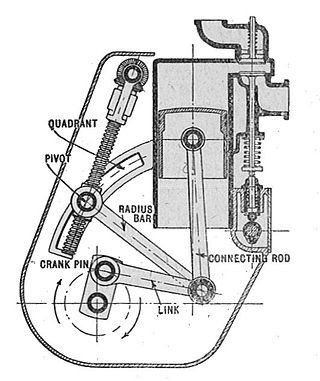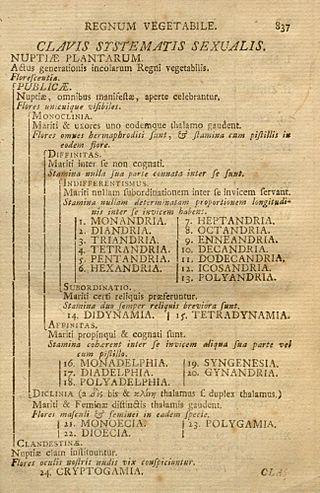
A chainsaw is a portable gasoline-, electric-, or battery-powered saw that cuts with a set of teeth attached to a rotating chain driven along a guide bar. It is used in activities such as tree felling, limbing, bucking, pruning, cutting firebreaks in wildland fire suppression, and harvesting of firewood. Chainsaws with specially designed bar-and-chain combinations have been developed as tools for use in chainsaw art and chainsaw mills. Specialized chainsaws are used for cutting concrete during construction developments. Chainsaws are sometimes used for cutting ice; for example, ice sculpture and winter swimming in Finland.

A bicycle chain is a roller chain that transfers power from the pedals to the drive-wheel of a bicycle, thus propelling it. Most bicycle chains are made from plain carbon or alloy steel, but some are nickel-plated to prevent rust, or simply for aesthetics.

Roller chain or bush roller chain is the type of chain drive most commonly used for transmission of mechanical power on many kinds of domestic, industrial and agricultural machinery, including conveyors, wire- and tube-drawing machines, printing presses, cars, motorcycles, and bicycles. It consists of a series of short cylindrical rollers held together by side links. It is driven by a toothed wheel called a sprocket. It is a simple, reliable, and efficient means of power transmission.
The chain is a unit of length equal to 66 feet, used in both the US customary and Imperial unit systems. The short way of writing chains is ch. It is subdivided into 100 links. There are 10 chains in a furlong, and 80 chains in one statute mile. In metric terms, it is 20.1168 m long. By extension, chainage is the distance along a curved or straight survey line from a fixed commencing point, as given by an odometer.

Vidhu Vinod Chopra is an Indian film director, producer, editor, screenwriter, lyricist and actor. His well-known films as director are Parinda (1988), and 1942: A Love Story (1994). He is also known for producing Munna Bhai film series, 3 Idiots (2009), PK (2014), and Sanju (2018) under his banner Vinod Chopra Films.

A mechanical linkage is an assembly of systems connected to manage forces and movement. The movement of a body, or link, is studied using geometry so the link is considered to be rigid. The connections between links are modeled as providing ideal movement, pure rotation or sliding for example, and are called joints. A linkage modeled as a network of rigid links and ideal joints is called a kinematic chain.

The large Fatih Mosque is an Ottoman mosque off Fevzi Paşa Caddesi in the Fatih district of Istanbul, Turkey. The original mosque was constructed between 1463 and 1470 on the site of the Church of the Holy Apostles. Seriously damaged in the 1766 earthquake, it was rebuilt in 1771 to a different design. It is named after the Ottoman sultan Mehmed the Conqueror, known in Turkish as Fatih Sultan Mehmed, who conquered Constantinople in 1453.
Elements of art are stylistic features that are included within an art piece to help the artist communicate. The seven most common elements include line, shape, texture, form, space, color and value, with the additions of mark making, and materiality. When analyzing these intentionally utilized elements, the viewer is guided towards a deeper understanding of the work.

The Tusi couple is a mathematical device in which a small circle rotates inside a larger circle twice the diameter of the smaller circle. Rotations of the circles cause a point on the circumference of the smaller circle to oscillate back and forth in linear motion along a diameter of the larger circle. The Tusi couple is a 2-cusped hypocycloid.

A chain is a serial assembly of connected pieces, called links, typically made of metal, with an overall character similar to that of a rope in that it is flexible and curved in compression but linear, rigid, and load-bearing in tension. A chain may consist of two or more links. Chains can be classified by their design, which can be dictated by their use:

Laid paper is a type of paper having a ribbed texture imparted by the manufacturing process. In the pre-mechanical period of European papermaking, laid paper was the predominant kind of paper produced. Its use, however, diminished in the 19th century, when it was largely supplanted by wove paper. Laid paper is still commonly used by artists as a support for charcoal drawings.

Bicycle suspension is the system, or systems, used to suspend the rider and bicycle in order to insulate them from the roughness of the terrain. Bicycle suspension is used primarily on mountain bikes, but is also common on hybrid bicycles.

A robotic arm is a type of mechanical arm, usually programmable, with similar functions to a human arm; the arm may be the sum total of the mechanism or may be part of a more complex robot. The links of such a manipulator are connected by joints allowing either rotational motion or translational (linear) displacement. The links of the manipulator can be considered to form a kinematic chain. The terminus of the kinematic chain of the manipulator is called the end effector and it is analogous to the human hand. However, the term "robotic hand" as a synonym of the robotic arm is often proscribed.

Fine metal chains are used in jewellery to encircle parts of the body, namely the neck, wrists and ankles, and they also serve as points to hang decorative charms and pendants. Unlike industrial or chains for other purposes, jewellery chains or body chains are designed for aesthetic purposes.

Koca Mustafa Pasha Mosque is a former Eastern Orthodox church converted into a mosque by the Ottomans, located in Istanbul, Turkey. The church, as the adjoining monastery, was dedicated to Saint Andrew of Crete, and was named Saint Andrew in Krisei or by-the-Judgment. Although heavily transformed during both the Byzantine and the Ottoman eras, it is one of the few extant churches in Istanbul whose foundation goes back to the sixth century.
Ernest and Sidney Howard Barnsley were Arts and Crafts movement master builders, furniture designers and makers associated with Ernest Gimson. In the early 20th century they had workshops at Sapperton, Gloucestershire.

3 Idiots is a 2009 Indian Hindi-language coming-of-age comedy-drama film written, edited and directed by Rajkumar Hirani, co-written by Abhijat Joshi and produced by Vidhu Vinod Chopra. Adapted loosely from Chetan Bhagat's novel Five Point Someone, the film stars Aamir Khan, R. Madhavan and Sharman Joshi in the titular roles, marking their reunion three years after Rang De Basanti (2006), while Kareena Kapoor, Omi Vaidya and Boman Irani appear in pivotal roles. Narrated through two parallel dramas, one in the present and the other set ten years in the past, the story follows the friendship of three students at an Indian engineering college and is a satire about the social pressures under the Indian education system.

Ted Jensen is an American mastering engineer, known for having mastered many recordings, including the Eagles' Hotel California, Green Day's American Idiot and Norah Jones' Come Away with Me.

Yassi Ada is an island off the coast of Bodrum, Turkey. This area of the Mediterranean Sea is prone to strong winds, making a safe journey around the island difficult. The island could be called a ships' graveyard, on account of the number of wrecked ships off its southeastern tip. Three wreck sites have been excavated under the direction of George Bass of Texas A&M University. The first to be studied using archaeological techniques was a 4th-century Byzantine wreck, the second a 7th-century Byzantine wreck, and the third a 16th-century Ottoman wreck. Bass received funding for a summer excavation at the site from the University Museum of the University of Pennsylvania and the National Geographic Society.

Notes is a notetaking app developed by Apple Inc. It is provided on their iOS, iPadOS and macOS operating systems, the latter starting with OS X Mountain Lion. It functions as a service for making short text notes, which can be synchronized between devices using Apple's iCloud service. The application uses a similar interface on iOS and macOS, with a non-textured paper background for notes and light yellow icons, suggesting pencil or crayon. Until 2013, both applications used a strongly skeuomorphic interface, with a lined, textured paper design; the Mountain Lion version placed this inside a leather folder. This design was replaced in OS X Mavericks and iOS 7.


















